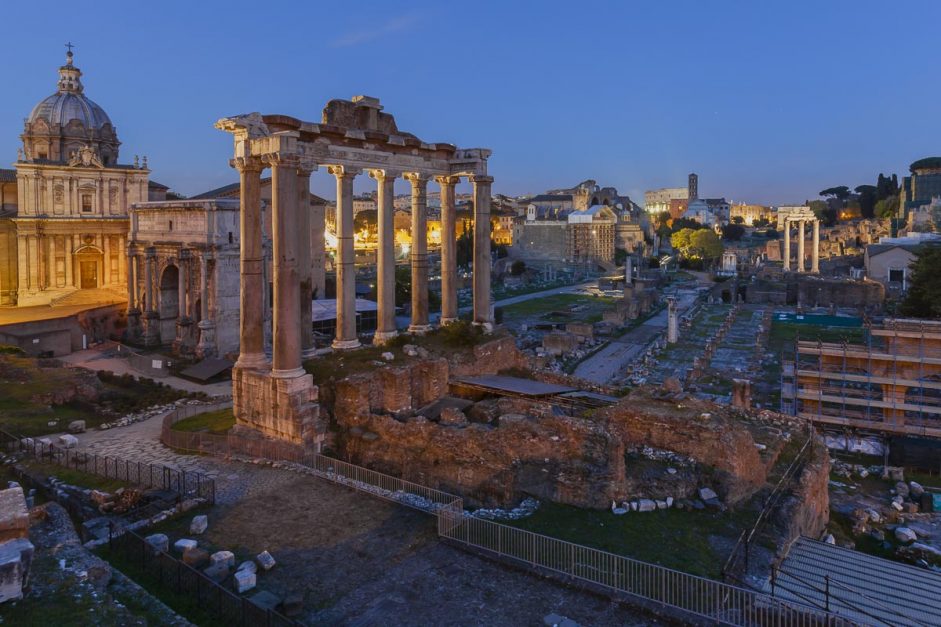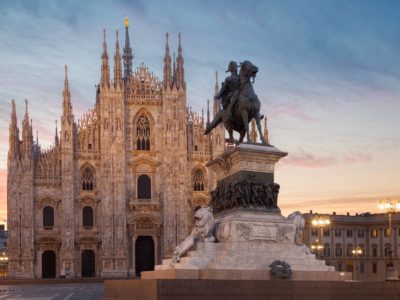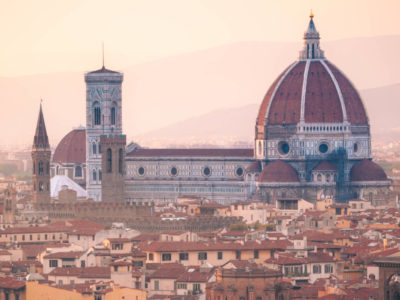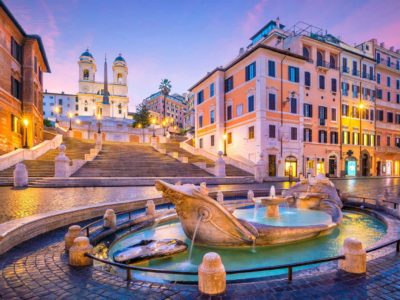Located in southern Europe, Italy is a Mediterranean country bordered by three seas (Adriatic, Tyrrhenian, and Ionian).
Known as the birthplace of Western culture, Italy is a stunning country affectionately referred to as the Bel Paese (the beautiful country).
A country full of history and beauty, it is a must-see for travelers.
From Unesco World Heritage Sites like the ruined city of Pompeii to coastal beauties like the Amalfi Coast and Cinque Terre, Italy is a great place for those who want to experience something different.
Add in great Italian cuisine and it makes a perfect vacation.
Get inspired to visit Italy and plan your dream trip with our Italy travel guide.
Table of Contents
Table of Contents
Fast Facts About Italy
- Currency: The official currency is the euro and 1 euro is equal to 1.12 USD.
- Power: Power voltage is 220V at 50 Hz.
- Entry: To enter, you will need a U.S. passport valid for at least 6 months after your departure date.
- Getting Around: The best way to get around is by public transport or renting a car but beware, Italians are hairy drivers!
- Sales tax: The value-added rate (VAT) rate is 20%.
- Best Sim Cards: TIM, Vodafone, WindTre, and Iliad are the main mobile providers. A prepaid SIM card can be purchased through any of them.
- The Capital City of Italy is Rome – See the Best Things to do in Rome
Things to See and Do in Italy
- Off the Beaten Path – step outside of Rome and explore the many villages that surround Italy’s capital.
- Hike Mount Etna: Take your adventure to a new level by climbing Italy’s highest Volcano.
- Learn How to Make Traditional Balsamic Vinegar – sold for up to $100 US for 100 ml, learn all about the ins and outs of making this delicious Italian vinegar.
- Meet David on a Walking Tour of Florence – get introduced to the beauty of Florence and be catapulted to the front of the line to see the famous statue of Michelangelo’s David
- Visit the Leaning Tower of Pisa – Pisa may be crowded with tourists, but this is one sight you do not want to miss.
- Explore Romagna – not only is Romagna home to Pavarotti, Enzo Ferrari, Ferrucio Lamborghini but it is also the gastronomical capital of the country.
- Explore the Vatican Museums: When in Rome you can’t miss Vatican City and these museums. Even if you are not a history buff you will be blown away by the beauty of this part of Rome.
- Explore the Italian Riviera: From hiking the famous Cinque Terre trail to relaxing on Sestri Levante beach, this is what Italian luxury is like. A visit to the Italian riviera is a perfect way to spend a week in Italy.
Italy Travel Guides
Budgeting
Accommodation
Budget: You can find a number of budget hotels in Italy for around 30-40 euros per night. Enjoy free Wi-Fi and breakfast, private rooms, and great city locations.
Mid Range: For mid-range hotels, expect to pay between 50-80 euros per night. Enjoy private air-conditioned rooms, indoor and outdoor pools, a hotel restaurant and bar, and free Wi-Fi.
High End: Upscale hotels will range from 150-1,220 euros per night.
Take in the best with top-of-the-line hospitality, elegant rooms and suites, spa services, indoor and outdoor pools, multiple fine dining restaurants, fitness centers with personal trainers, private balconies, and more.
Food
If you intend to visit Italy for food you won’t be disappointed.
Italian cuisine is famous for pasta, tomatoes, cheese, fish, and meat.
While many might think that spaghetti and meatballs are the traditional dish of Italy, this is not true, and in fact, is rarely eaten in Italy (except for tourist places).
The national dish is Ragu alla Bolognese Sauce (meat-based sauce served in tortellini, gnocchi, or tagliatelle pasta). Other favorites include pizza, lasagna, and bottarga (cured fish roe).
There are a number of restaurants where you can try authentic Italian cuisine, as well as cafes.
Try a cappuccino for about 1.34 euros (but remember, if you want to follow tradition, it is custom not to drink one after 10 or 11 AM).
In total, expect to pay about 10-20 euros per meal for most restaurants, or 50 euros per meal for three-course restaurants.
The Best Ways To Get Around Italy
Getting to Italy: The Leonardo de Vinci-Fiumicino Airport is one of the busiest airports to fly into and is 20 miles from the city center.
The Malpensa International Airport is great when going to Milan and is a 20-40 minute train ride to the city of Milan.
Transportation: Trains are a fast way to get around. You can find trains both for regional trips as well as between cities. High-velocity trains are a speedy and fairly inexpensive way to travel throughout Italy.
Go from Rome to Florence in 2 hours, for example, and pay just 25 euros.
Buses: Italy has a number of buses for shorter trips, as well as metro services in larger cities like Rome and Milan. Tickets start at 1-2 euros.
Make sure to purchase your tickets before boarding or you can get a fine up to 100 euros.
Taxis: Taxis are an alternative way to get around. You can hail one down or call for a taxi, though note that if you call, the meter starts running once you call.
A typical price for a taxi is about 15 euros, depending on the distance .
Car Rental: To rent a car, you must be at least 21 years old and have a U.S. license as well as an International Driver’s License. It is advised that you know the rules of the road before driving in Italy.
Prices start at around 55 euros per day. But you can find great deals for car rentals too so look around.
When to go to Italy
The best time to visit Italy is from April to June and September to October.
July and August are usually quite crowded, and hotel rates are at their peak, whereas spring and early autumn have lower prices and the temperatures are neither too hold or too cold for outdoor and sightseeing activities.
If you are spending most of your time in the north then I would definitley say the best time to visit would be during the fall and winter. You have fewer crowds but great mountain activities like skiing.
Where to Stay in Italy
Hotel Italia: A traveler favorite, stay at this great hotel in Rome. Just 9 minutes from multiple airports and minutes away from numerous attractions (including the famous Trevi Fountain), this is the place to stay.
Acca Palace: Stay at this four-star modern hotel in Milan. Sleep in private suites with a balcony and a minibar and enjoy amenities like room service, dry cleaning and laundry services, the hotel’s restaurant and bar, free high-speed Wi-Fi, and transportation to the airport.
San Gallo Palace—Florence: Just 30 minutes from the Florence airport and minutes from attractions like the Florence Cathedral and the Uffizi Gallery, this hotel puts you in the heart of everything.
Italy Accommodation Guides
What to Pack for Italy
Similar to many European countries, the climate of Italy is highly diverse depending on where you plan on traveling.
If you are spending your time on the Amalfi coast you will be packing differently than if you are up in the Italian Dolomites.
Considerable differences in temperatures between the north and south are more prominent during the winter months.
Winters are cold and damp in the north and milder in the South.
However, most of Italy has hot dry summers with July being the hottest month of the year.
- Toiletries – beauty items and toiletries can be expensive in Italy if you want to save some money than pack some extra in your bag.
- Blend in – Italians love to dress up, so why not pack some basic classic items that you can mix and match throughout your trip. Try to avoid baseball caps and white sneakers.
- Wedges – Italy is known for its cobblestone streets. If you want to pack a fancy pair of heels for a classy night out on the town than stick with wedges over stilettos. Wedges allow you to walk smoothly over the cobblestone.
- Layers – this is especially important for those traveling throughout Italy during the winter months. The general rule of thumb is to pack at least four layers: a base layer, long sleeve shirts, a fleece (mid-layer) and a top layer such as a windbreaker. Don’t forget a warm pair of gloves, a thick scarf, and a hat!
Italy Travel Guide: Best Booking Resources
Whenever we travel to Europe we make sure to start with these companies.
We have tried a lot of different ones over the years and all of these have consistently proven to be the best when it comes to offering great prices as well as great customer service.
We have used every one of these personally and continue to do so.
Booking.com: This is our go-to site when comparing prices for accommodation. It is usually and has the cheapest prices, especially in Europe and we love their interface. Not to mention you get free cancellation and you are guaranteed the best price.
Trip Advisor: What we like about Trip Advisor is that we can look at all the reviews and then book our accommodation. TripAdvisor is where we go when we want to compare prices with multiple accommodation providers.
Air BnB: Airbnb is the main search engine we use when we are looking for a home or apartment rental. It can sometimes be cheaper than hotels and it is the best way to stay in areas that offer a more local feel.
Hostelworld: With one of the largest databases of hostels in the world, Hostelworld is the go-to site when you are looking for budget accommodation.
Skyscanner: This is the first place we check for flights. It consistently comes back with the cheapest and best options. It allows us to compare a lot of airlines to get the best price.
Rome 2 Rio: If you want to see how to get somewhere by plane, train, bus, ferry, or car Rome2Rio lays it all out for you as well as related costs. I love how they show it all to you on a Google Map and it works offline.
Get Your Guide: For all your day trip and city guide needs, we use Get Your Guide. It has the world’s largest collection of things to do with more than 30,000 activities in 7500 destinations.
World Nomads Insurance: When traveling to Italy you should always have travel insurance. We have found the best bang for your buck is by far World Nomads.




